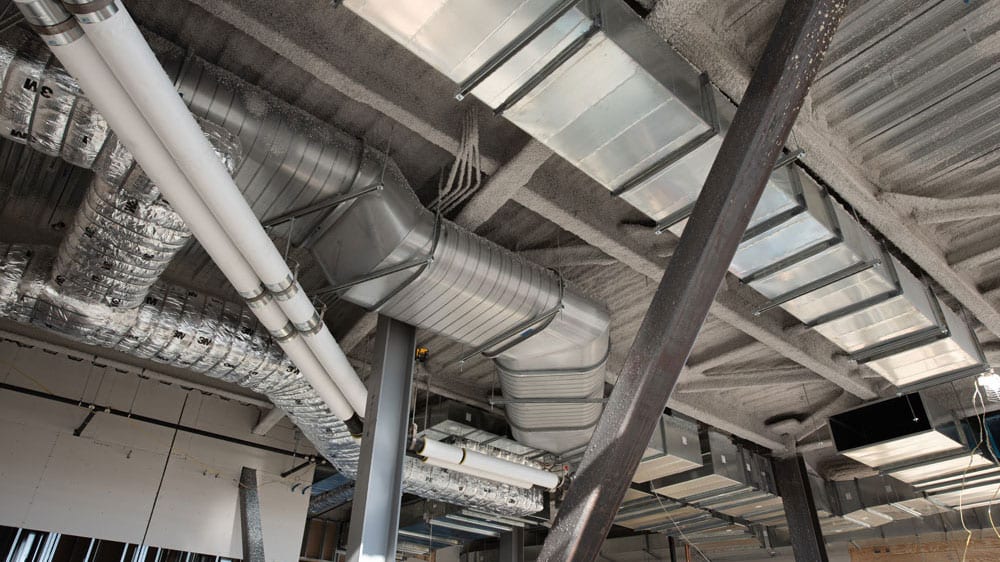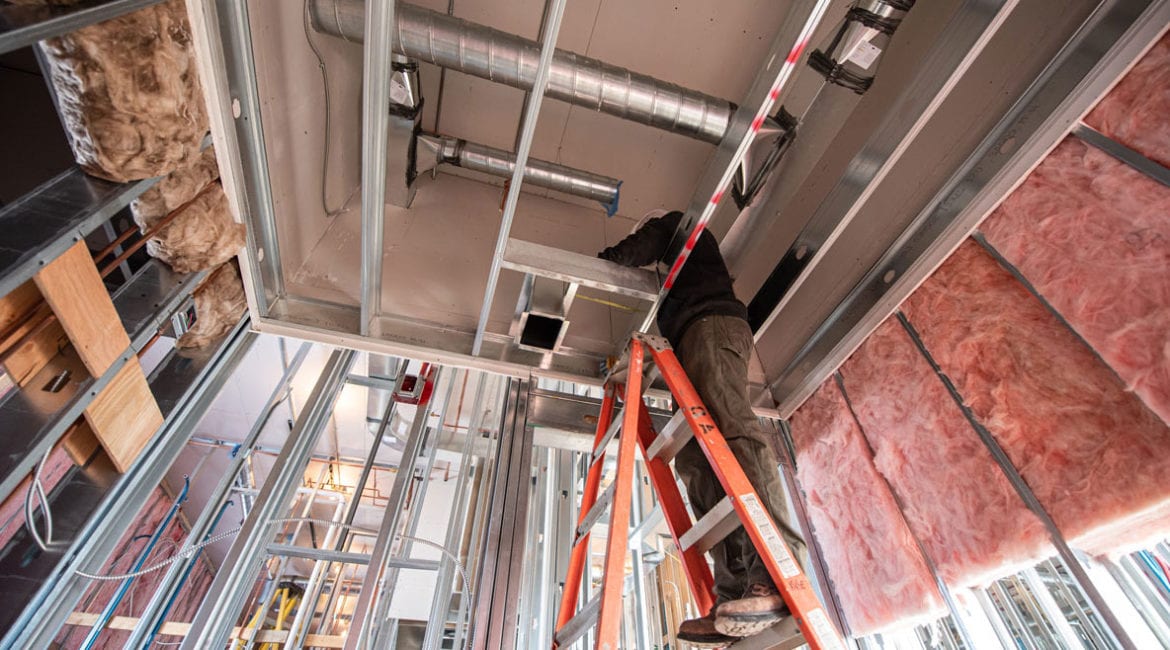“HVAC” is a term we use all the time at Custom Aire, but people who work outside of the HVAC industry often wonder what this abbreviation means. We certainly understand every profession has some kind of technical language!
However, because HVAC systems are integral structures in commercial buildings, we want to clarify the term for facility owners and operators who want to learn more, but also to shed a light on what this essential profession entails for young people considering HVAC as a career.
Lets dive in to answer the common question “What is HVAC?”
HVAC Basics
“HVAC” stands for Heating, Ventilation, and Air Conditioning. The term applies to any system that maintains proper temperatures, air flow, air quality, and humidity levels inside residential and commercial buildings.
Every HVAC system functions differently, depending on the type, age, and condition of the equipment installed in the space. The larger the building, the larger the equipment and the more complex the system needed to maximize efficiency.
Each letter in “HVAC” has a specific role to play in keeping buildings comfortable year-round, although operation of heating and cooling equipment depends on the season. Let’s start with “H.”
Heating
Heating systems are imperative for surviving the long, cold winters in our region. Commercial heating systems vary widely by fuel source, equipment, and heat distribution method to keep buildings warm during frigid months. Gas, oil, wood, and geothermal energy are a few examples of fuel sources for heating equipment, which stores the generated heat and distributes it throughout a building. Most commercial heaters are centrally located to optimize heat distribution and are usually one of two types of system: forced air or radiant heating.
As the name suggests, forced air systems warm facilities by distributing heated air from a furnace through webs of ductwork that connect to every room in a building. Radiant heating systems distribute warmth via hot water through pipework from a central boiler. Instead of heated air blowing from a vent, buildings with radiant heating systems stay warm from the energy diffused from radiators in the floor or on the wall.
Regardless of the heating system installed in a space, an important aspect of maintaining comfort indoors is fresh, clean air to breathe. That is where the “V” in HVAC steps in.
Ventilation
Breathe in, breathe out. If you’re sitting inside and the air you’re breathing is healthy and clean, that’s because of ventilation, or the process of providing fresh air to (and removing stale air from) indoor spaces through ductwork.
However, ventilation is about more than just air flow. HVAC professionals use complex formulas to determine the proper size of the ductwork according to air flow velocity, friction loss, static pressure, square footage, and other factors for heating and cooling systems to operate safely and efficiently.

These formulas also determine how much filtration is necessary to maintain good indoor air quality and balanced humidity levels in commercial spaces. However, because leaks can happen any time, facility owners should have their ductwork routinely inspected by a certified HVAC professional. Installing custom sheet metal ductwork and air purification products can also optimize efficiency and air quality in commercial HVAC systems.
Lastly, the “cool” part of HVAC is “AC” or air conditioning.
Air Conditioning
Once temperatures start to rise, central cooling systems take over maintaining comfortable temperatures indoors. Commercial air conditioners often share ductwork and other mechanisms with central heating equipment; however, AC units are typically split between the indoors and outdoors and use a chemical called refrigerant to mechanically cool down heated air that enters the system before it is distributed.
Because humidity levels are higher in hot weather, air conditioners also remove excess moisture from the air to prevent indoor “stickiness” and the growth of hazardous mold and mildew.
While air conditioning was considered a luxury when Willis Carrier invented it over a century ago, it is now an essential part of our social and economic well-being especially in the commercial sector. That’s why taking proper care of your HVAC system is so crucial.

Importance of HVAC Maintenance
No matter the type of system installed in a facility, commercial HVAC equipment needs to be properly maintained by a certified HVAC professional at least once a year to ensure every step of the process is in working order. Buildings with larger systems need more frequent maintenance, especially in industries like healthcare that have specific requirements for their HVAC systems.
Custom Aire offers customizable maintenance plans called Energy Savings Maintenance Agreements to keep commercial HVAC systems efficient, safe, and reliable. To learn more about our maintenance plans, commercial HVAC services, or career opportunities, contact us today!





